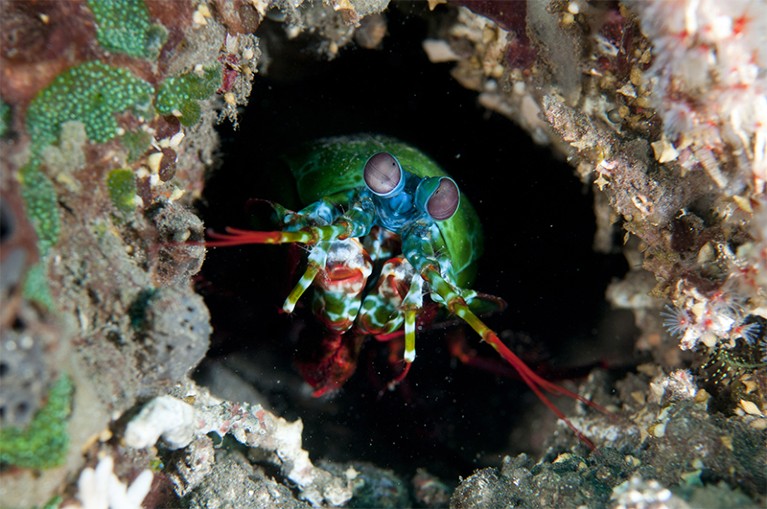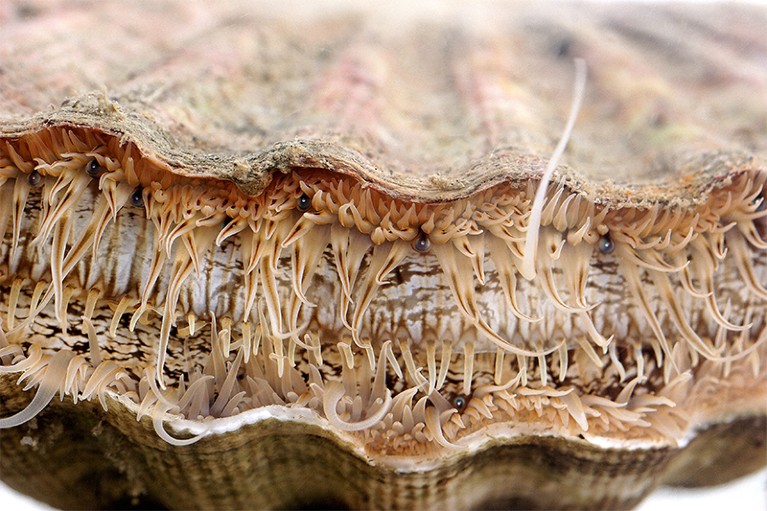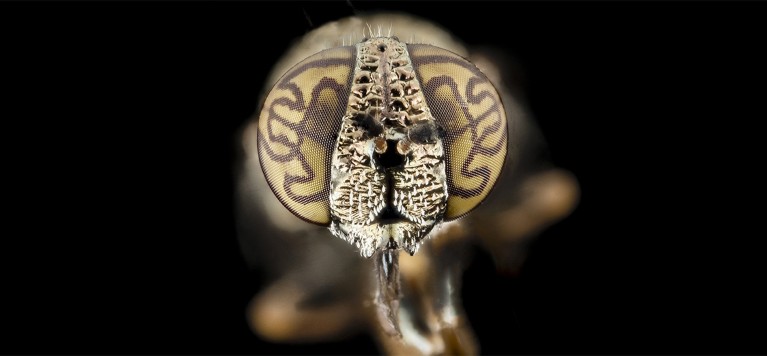Eyes to See: The Astonishing Variety of Vision in Nature Michael F. Land Oxford University Press (2018)
The many eyes of scallops use reflecting mirrors, something like telescopes. Mantis shrimp have 12 classes of colour receptor to our 3. These findings in vision science are just two of many milestones in neurobiologist Michael Land’s meander through topics in the field — from the optical physics of eye function to the neurobiology of how brains interpret optical phenomena. Eyes to See is the journey of a scientist who followed his nose (and eyes) towards what fascinated him.
The book is organized loosely around Land’s career. Opening with his 1960s discovery of scallop eyes’ bizarre reflecting mechanism, Land quickly transitions to the evolution of early eyes. Here, he lucidly encapsulates zoologist Dan-Eric Nilsson’s functional synthesis, which links demands such as efficiency of light capture to optical innovations such as elaborations of cell membranes. These innovations underlie four main stages of eye evolution: non-directional, directional, low-resolution and high-resolution vision.
Land dives into history, such as the contributions of late-nineteenth-century scientist Sigmund Exner, along with fun anecdotes and clearly described optical principles. He relates how he and a colleague shot peppercorns, pieces of potato and tethered peas towards male hoverflies, which mistook the objects for females, while another colleague lay on his back to film the flies’ pursuit. Land describes the optics of arthropods’ compound eyes, which include apposition and superposition eyes, both reflecting (co-discovered by Land) and refracting. Superposition eyes combine light from multiple facets onto a single receptor and are found in many nocturnal insects.

Mantis shrimp have 12 colour receptors in their eyes; humans have only 3.Credit: Colin Marshall/FLPA
Underwater wonders
To study the eyes of deep-sea animals, Land spent time on research vessels. He writes of camouflage. Silver-sided fishes, for instance, reflect the homogeneous horizontal scenes of the open sea to blend in. Bioluminescence, is often deployed to match downwelling light and avoid casting a shadow. Here in the deep, we also meet some other amazing creatures, including the hyperiid amphipods and the spookfish Dolichopteryx longipes, which have peculiar double eyes that look straight up and down to take advantage of the environment’s vertically oriented light.
Even the most sophisticated eyes are of no use without a brain with which to interpret and use the information. In examining neurobiology, Land first looks at how animals recognize things. He found, through experimentation with cotton reels and remote-controlled toy cars, that fiddler crabs use simple rules to detect potential mates or predators — anything seen to extend above the horizon is bigger than a crab and therefore a foe. Thus, crabs are easily fooled, even by simple shapes shown to them by experimenters. Land also recounts how, in 1968, he developed an ophthalmoscope for tiny jumping spiders such as Phidippus johnsoni, to track their eye movements in an era before video. With this, he discovered something like a program of eye movements that the spiders use to detect potential mates, for example by looking for legs. The spider ophthalmoscope is one of the clearest accounts in the book of Land’s scientific ingenuity.
Leaving invertebrates behind, Land moves on to humans. As he writes, we can communicate about what we see, making some aspects of vision — especially perception — easier to study in humans than in (say) a mantis shrimp. He has used eye-tracking tools to learn where people look when driving around a curve, reading words or music, or striking a cricket ball. This research expands into the realms of psychology — investigating mental images of colour and depth — and beyond, to philosophical territory such as consciousness.

The eyes of scallops contain mirrored structures, a little like telescopes.Credit: BSIP/Getty
Behind the lens
I had a few criticisms. First, instances of outdated scholarship pepper the book. One example is Land’s discussion of graded-index lenses in aquatic animals, which achieve high power without spherical aberration, using a smooth transition from low to high refractive power. Land suggests that how the proteins of a graded lens are arranged remains a mystery. This omits high-profile work by biophysicist Alison Sweeney and her colleagues on squid lenses, which shows how proteins — duplicated and differently sized — pack to different densities to create a smooth transition in refractive index (A. M. Sweeney et al. J. R. Soc. Interface 22, 685–698 (2007); J. Cai et al. Science 357, 564–569; 2017).
Land’s organization of ideas often seems forced, as if he has tried to shoehorn research driven mainly by curiosity into synthetic constructs. For example, I found his adaptationist summary unsatisfying. He uses geneticist Theodosius Dobzhansky’s ubiquitous quote — “nothing in biology makes sense except in the light of evolution” — to contend that evolution makes progress when needed. But evolution has not been the main thrust of Land’s research, and a view of it as an optimizing force does little to inform us about how a specific eye works or how a specific brain decodes visual information.
Yet the positives of Eyes to See outweigh its negatives. It is enjoyable to get frequent glimpses of Land’s career, which has defined many of the most actively studied topics and organisms in visual ecology today. Ultimately, there is a coherence to the book’s seemingly stochastic journey through the workings of vision, as we proceed from photon to philosophy.


 In Retrospect: The Book of Optics
In Retrospect: The Book of Optics
 Our useful inability to see reality
Our useful inability to see reality
 The aided eye
The aided eye








